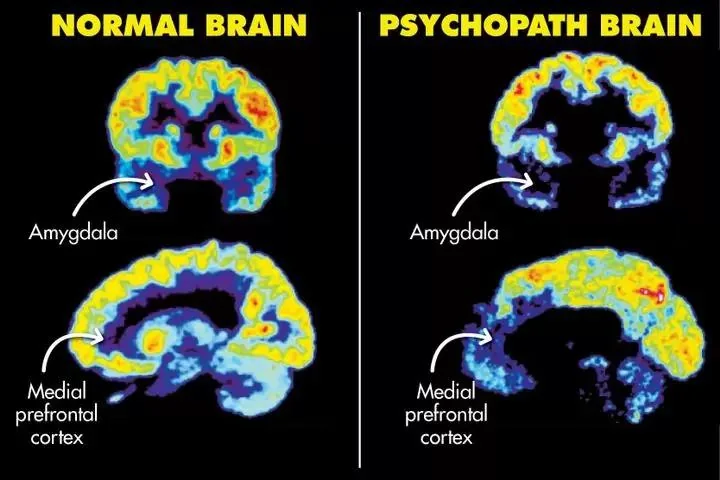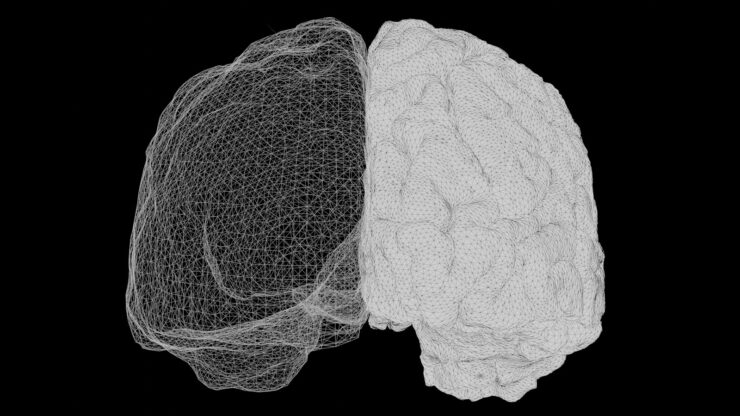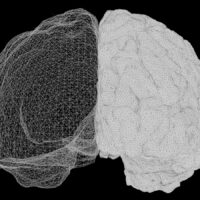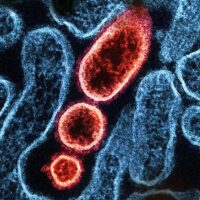A joint team of neuroscientists from Nanyang Technological University (NTU Singapore), the University of Pennsylvania, and California State University has uncovered a significant biological difference between individuals with psychopathic traits and non-psychopaths. This measurable distinction supports a neurodevelopmental perspective on psychopathy.
To investigate this, the researchers used magnetic resonance imaging (MRI) scans. They found that the striatum consistently appeared enlarged in individuals exhibiting psychopathic characteristics. The striatum is a key region in the forebrain. Specifically, psychopaths had a striatum about 10% larger than non-psychopaths.
Furthermore, the study aimed to replicate previous findings. As a result, psychopathic individuals showed a 9.4% increase in striatal volume compared with matched controls. Consequently, this replication effort built upon initial findings and resulted in an updated effect size of d = 0.48. Subsequently, the researchers published their results in the Journal of Psychiatric Research.
Generally speaking, psychopathy combines several traits. These include self-centeredness, emotional coldness, and a pronounced lack of remorse or empathy. In some cases, these characteristics can manifest alongside criminal or antisocial behavior.

How Does the Striatum in the Brain Influence Psychopathic Traits?
The striatum is a crucial structure within the subcortical forebrain region. Moreover, scientists also recognize it as part of the basal ganglia. It performs vital functions related to motivation, decision-making, and reward processing. Additionally, it coordinates motor actions. In turn, it influences how individuals plan and respond to various stimuli.
Meanwhile, the striatum receives sensory and processing input from the cerebral cortex. Notably, the cortex governs reasoning, social behavior, and attention direction. Over the last two decades, scientists have recognized the striatum’s link to behavioral and social regulation.
Previously, earlier studies suggested that psychopaths might possess an overactive striatum. However, researchers hadn’t confirmed how its physical size impacts behavior until this study. In contrast to earlier work, this new research provides strong evidence of a structural biological distinction.
Importantly, the study addressed past limitations in research. For instance, the researchers controlled for several common psychiatric comorbidities. These included substance dependence and abuse, Attention Deficit Hyperactivity Disorder (ADHD), and Antisocial Personality Disorder (APD). Ultimately, the findings confirm something important: the observed increase in striatal volume is specific to psychopathy. Therefore, it’s not simply an artifact of these co-occurring clinical conditions.
Why Are Psychopaths Highly Impulsive and Stimulation Seeking?
The enlargement of the striatum directly connects to personality traits that drive psychopathic behavior. Particularly, these include a higher craving for stimulation and increased impulsivity. To demonstrate this, the researchers analyzed MRI scans and interview data. They discovered that individuals with a larger striatum showed a stronger desire for excitement and risk-taking behavior.

Indeed, Professor Adrian Raine noted that psychopaths go to “extreme lengths” to seek rewards. Often, they engage in criminal activities involving property, sex, and drugs. Accordingly, the current findings provide a neurobiological explanation for this impulsive and sensation-seeking behavior. Specifically, they identify the enlarged striatum as the underpinning—a key brain area involved in rewards.
Moreover, the researchers formally examined potential mechanisms using a mediation model. These mechanisms were impulsivity and stimulation-seeking. The results confirmed that these two factors partially accounted for the striatal-psychopathy relationship. In fact, they explained 49.4% of this association.
This suggests something significant. Namely, the striatal enlargement may predispose individuals to fundamental personality processes. Subsequently, these processes increase the likelihood of psychopathic traits. Overall, the data supports the hypothesis that abnormal reward processing is a core component of psychopathy.
Is Psychopathy a Neurodevelopmental Condition, and Does It Affect Women Too?
The study supports the idea that psychopathy links to differences in neurodevelopment. For example, Professor Adrian Raine highlighted that biological traits can pass down through inheritance. This includes the size of the striatum. Therefore, these findings lend added support to neurodevelopmental perspectives.
These perspectives hypothesize something about brain development. Essentially, the brains of these individuals may not develop normally throughout childhood and adolescence. Typically, the striatum decreases in size as the brain matures from childhood into adulthood.
Similarly, Assistant Professor Olivia Choy emphasized an important point. Understanding antisocial behavior requires considering both social environmental influences and biological differences. These differences include the size of brain structures. While she acknowledged the role of the environment in affecting striatal structure, she also noted that psychopathy could link to a structural abnormality in the brain that is developmental in nature.
Looking forward, the research team plans to continue investigating. They want to understand the factors that cause this striatal enlargement. Additionally, they want to know how it contributes to psychopathic traits.
Crucially, the study made important advances in understanding psychopathy across sexes. The researchers examined 120 adults in the US. This included a smaller sample of 12 females. Until this study, few prior investigations had examined structural differences in women.
For the first time, this research established something special. The association between psychopathic traits and an enlarged striatum exists in both males and females. Notably, researchers found the association between increased striatal volume and psychopathy in females to be statistically significant (p = .02).
Finally, the study also stood out methodologically. The participants came from the community rather than institutional settings like jails or prisons. Instead, researchers recruited them from temporary employment agencies in the Greater Los Angeles area. Thus, this approach allowed researchers to understand psychopathic traits in individuals “who walk among us each day.”
REFERENCES
Journal of Psychiatric Research — “Larger striatal volume is associated with increased adult psychopathy,” by Olivia Choy, Adrian Raine, and Robert Schug (published March 6, 2022). https://doi.org/10.1016/j.jpsychires.2022.03.006




















